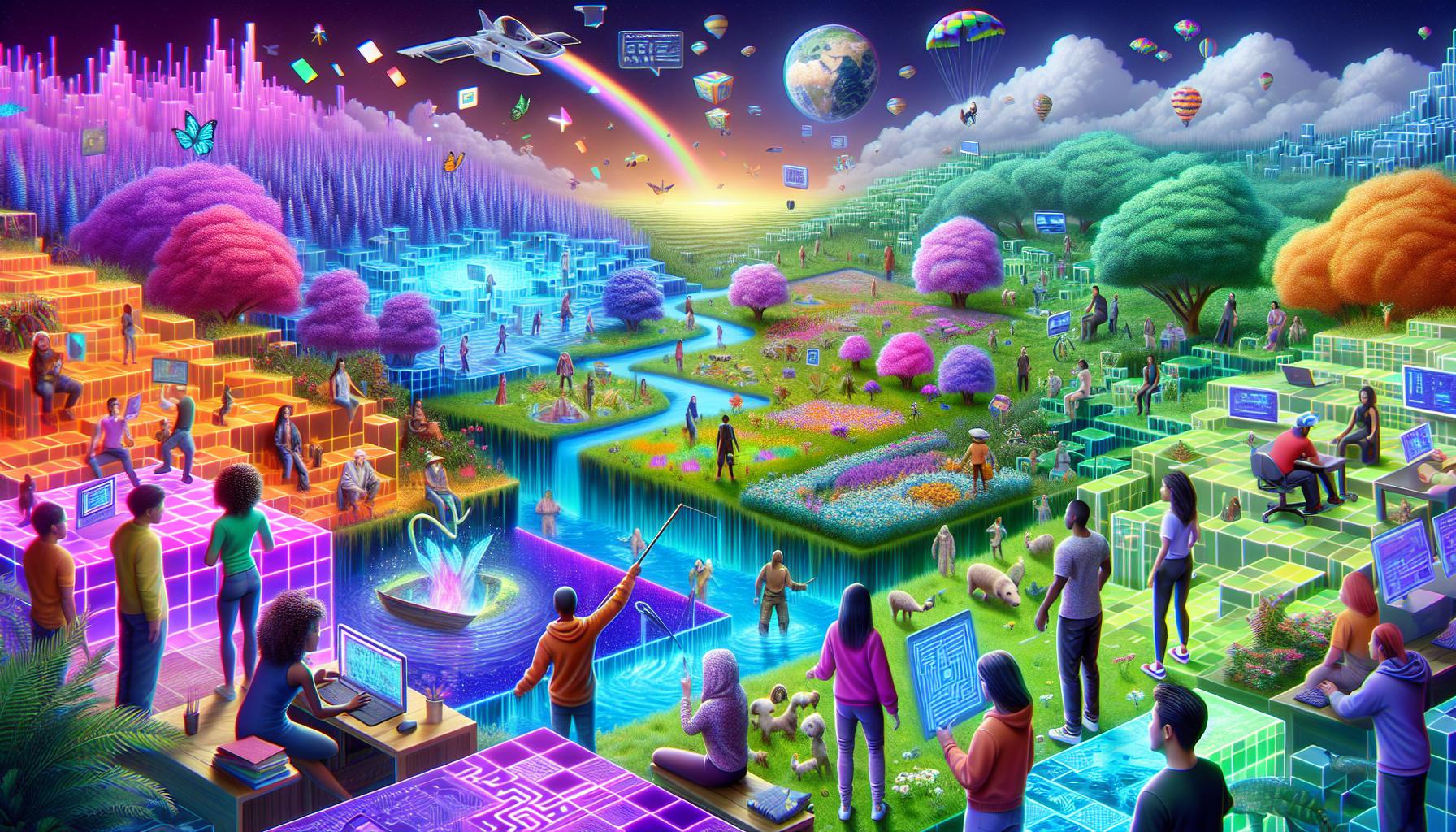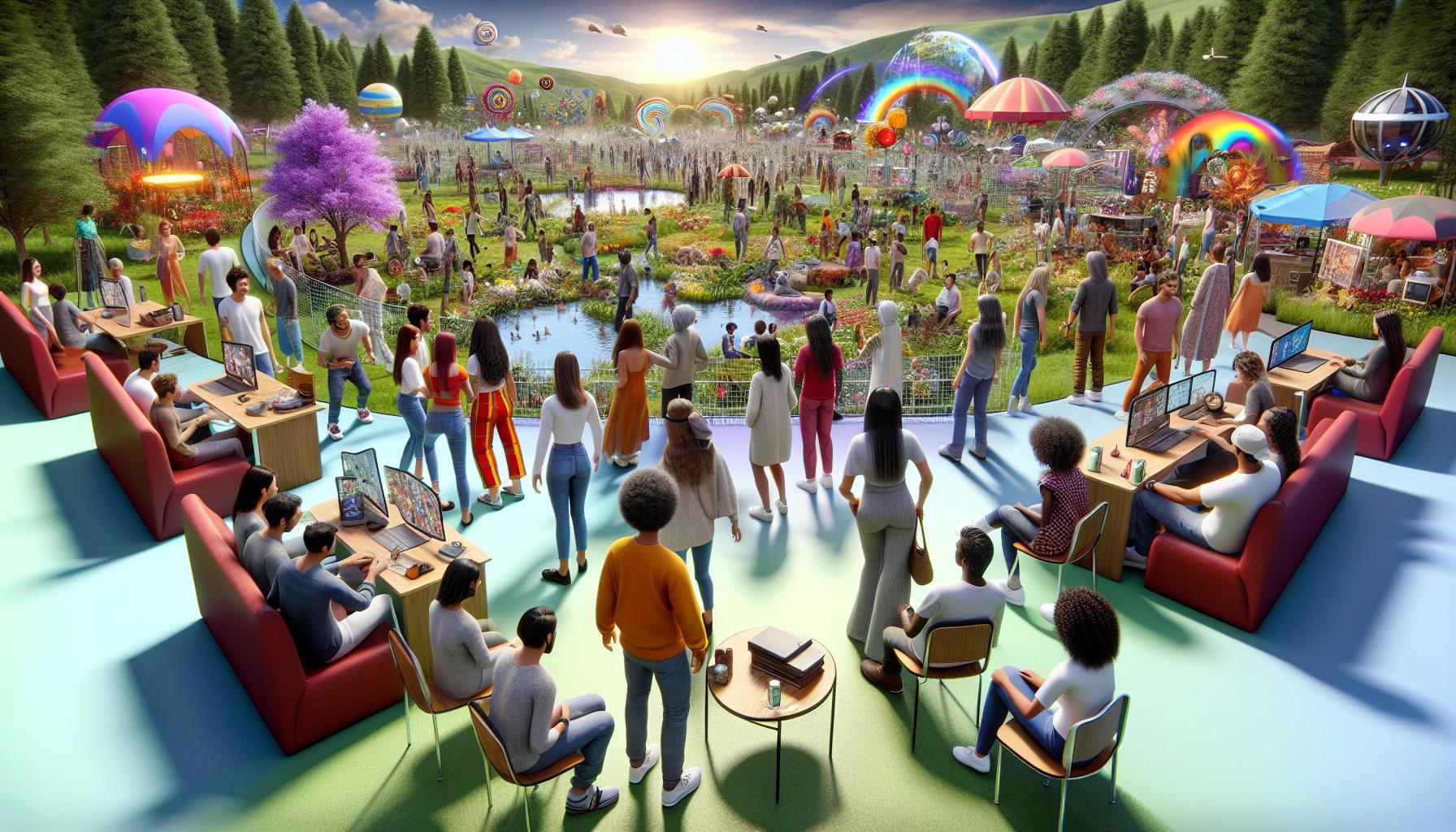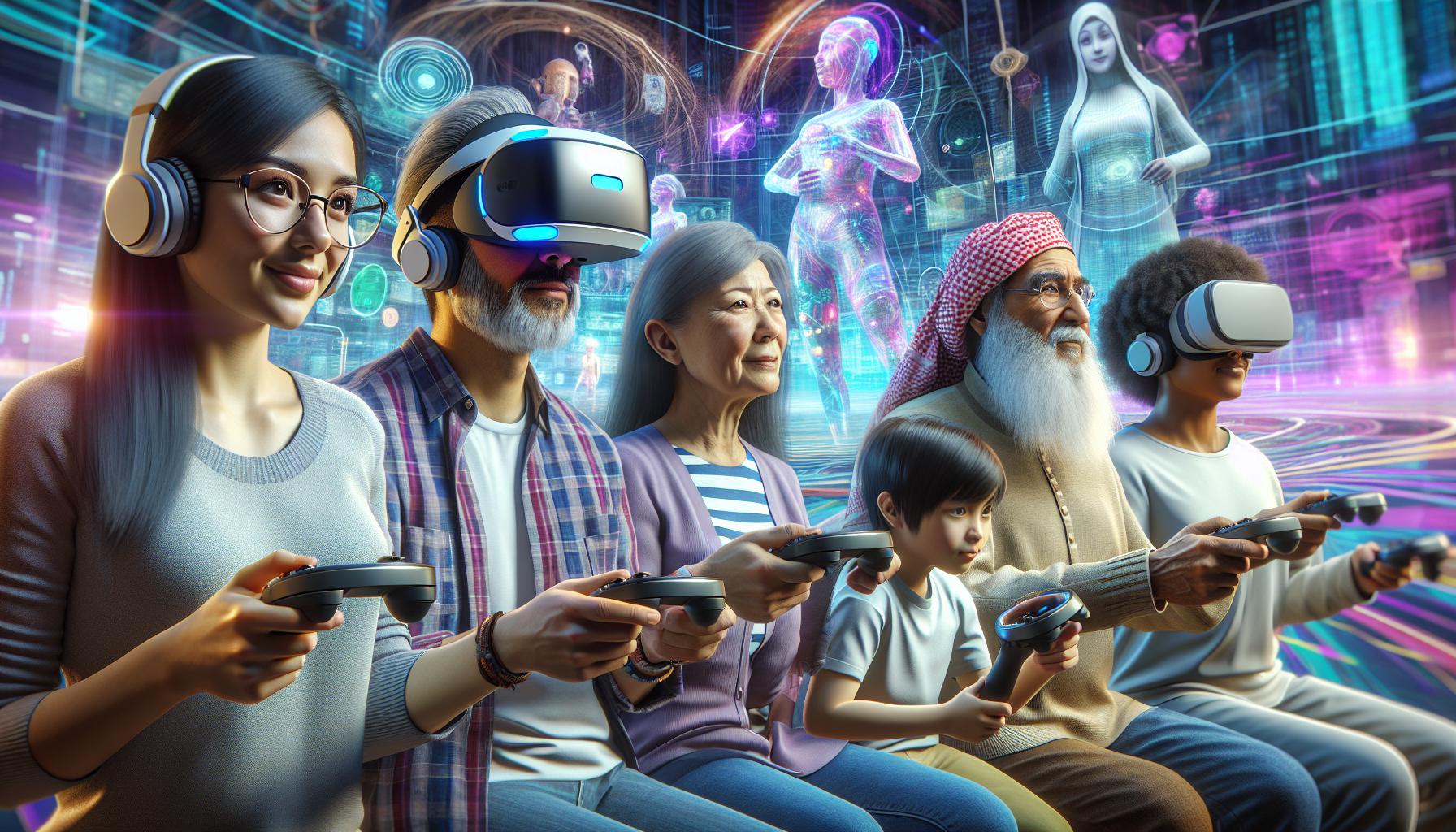Key Takeaways
- Definition and Purpose: Virtual worlds are immersive digital environments that facilitate social interactions, gaming, and creative expression through avatars and real-time engagement.
- Core Features: Key characteristics of virtual worlds include interactivity, customization, and community formation, allowing users to personalize their experiences and connect with others.
- Variety of Worlds: There is a diverse range of virtual worlds categorized into social, gaming, and educational platforms, each offering unique attributes and engagement opportunities.
- Future Trends: Advancements in technology such as VR, AR, and AI are expected to enhance realism and user engagement, while increasing integration and interoperability between various virtual worlds.
- Monetization Opportunities: Virtual worlds provide avenues for creators to monetize their content, including virtual goods and experiences, contributing to the sustainability and continuous development of these platforms.
- Growing Popularity: As societal interest in digital experiences rises, virtual worlds are becoming integral to personal, social, and educational interactions in the digital age.
In an era where digital experiences are becoming increasingly immersive, virtual worlds have emerged as captivating environments for exploration and interaction. These dynamic spaces offer users the chance to escape reality, connect with others, and engage in creative pursuits. From sprawling landscapes to bustling cities, each virtual world presents unique opportunities and experiences.
As interest in these digital realms grows, so does the need for a comprehensive list of the most engaging virtual worlds available. Whether it’s for gaming, socializing, or creative expression, finding the right virtual world can enhance one’s online experience. This article dives into a curated selection of virtual worlds, highlighting their distinctive features and what makes them stand out in the ever-expanding digital universe.
Virtual Worlds List
Virtual worlds comprise immersive environments that facilitate social interaction, gaming, and creative expression. Users navigate these digital realms through avatars while interacting with others in real time. The flexibility and diversity of virtual worlds cater to a wide range of interests, from competitive gaming to artistic exploration.
Key Characteristics of Virtual Worlds
- Interactivity: Users engage with the environment and each other, creating a dynamic experience where actions impact the virtual space.
- Customization: Many virtual worlds allow users to personalize avatars, environments, and items according to individual preferences.
- Community Formation: These spaces foster social connections by enabling users to meet, collaborate, and share experiences with others.
- Gaming Worlds: Games like “World of Warcraft” and “Fortnite” offer expansive environments filled with quests, battles, and challenges.
- Social Worlds: Platforms such as “Second Life” enable users to socialize, create events, and build virtual communities.
- Creative Worlds: Spaces like “Minecraft” promote creativity through building structures, crafting items, and exploring user-generated content.
Virtual worlds continue to evolve, incorporating advances in technology. As interest in these environments grows, so does the variety of experiences available, catering to diverse user preferences and enhancing their digital interactions.
Popular Virtual Worlds List

This section outlines notable virtual worlds across various categories, emphasizing their unique attributes and user engagement.
Social Virtual Worlds
Social virtual worlds emphasize community interaction and relationship building. Users create avatars to explore environments, attend events, and engage in conversations.
- Second Life: A pioneer in social virtual experiences, offering customizable avatars and diverse user-generated content.
- VRChat: Focuses on immersive experiences with voice and gesture communication, providing a platform for creativity and user interaction.
- The Sandbox: Encourages players to create, own, and monetize their gaming experiences through an active social platform.
Gaming Virtual Worlds
Gaming virtual worlds offer rich, immersive experiences centered on quests and competition. Players invest time exploring environments filled with challenges.
- World of Warcraft: A legendary MMORPG known for its expansive world and intricate lore, attracting millions of players globally.
- Fortnite: Combines battle royale mechanics with creative building, making it a social gaming phenomenon.
- Genshin Impact: Features an open-world environment, stunning visuals, and character-based gameplay that draws players into its narrative.
Educational Virtual Worlds
Educational virtual worlds provide interactive learning opportunities and collaborative experiences. These environments engage users in knowledge acquisition.
- Minecraft: Education Edition: Utilizes the popular game format to teach subjects like math, science, and coding through creative building and problem-solving.
- VirBELA: Offers a virtual campus facilitating remote learning and collaboration, replicating real-world educational structures.
- Tilt Brush: A VR program allowing users to paint in 3D space, providing innovative ways to explore artistic expression and creativity.
Features of Virtual Worlds

Virtual worlds possess distinct characteristics that enhance user engagement and provide immersive experiences. Key features include user interaction, customization options, and monetization opportunities.
User Interaction
User interaction forms the core of virtual worlds, enabling real-time communication and collaboration. Users engage with others through avatars, participating in conversations, activities, and events. Interaction levels vary from casual chats to complex collaborations. Realistic physics and 3D elements contribute to immersive experiences, allowing users to navigate environments dynamically. Popular platforms like “VRChat” and “Second Life” exemplify high levels of user interactivity, fostering community development.
Customization Options
Customization options allow users to personalize their experience, enhancing individual creativity and expression. Users can modify avatars, environments, and equipment through various tools. Many platforms offer extensive libraries of assets for users to choose from, making the environment unique. Games such as “Roblox” and “Fortnite” provide in-depth customization systems that encourage personal expression, contributing to user satisfaction and retention.
Monetization Opportunities
Monetization opportunities exist within numerous virtual worlds, creating revenue streams for creators and developers. Users can sell virtual goods, experiences, or services through marketplaces. Some platforms offer subscription models or in-game purchases, generating ongoing revenue. Successful examples include “Second Life,” where users monetize virtual property and services, and “Fortnite,” which introduces cosmetic items for purchase. These financial aspects boost the sustainability of virtual worlds, enabling continuous development and innovation.
Future of Virtual Worlds

The future of virtual worlds promises significant advancements and broader adoption across diverse sectors. As technology evolves, virtual worlds become increasingly immersive, driven by developments in augmented reality (AR), virtual reality (VR), and artificial intelligence (AI).
Enhanced realism in virtual worlds emerges through improved graphics and sensory experiences. Innovations in VR technology enable more lifelike interactions, making users feel as if they’re truly present in these digital spaces.
Social engagement continues to expand, encouraging users to forge deeper relationships. As platforms integrate better communication tools and interactive features, community building grows stronger and more vibrant.
Education stands to benefit from the expansion of virtual worlds. Educational institutions increasingly adopt these environments for remote learning and collaboration. Through immersive experiences, students gain hands-on learning opportunities that traditional methods can’t replicate.
Monetization strategies evolve as well, allowing creators and developers to harness economic opportunities. Virtual worlds facilitate user-generated content markets, enabling users to create and sell products within these environments. Enhanced payment systems and rewards encourage participation and investment from players.
Interoperability between different virtual worlds enhances user mobility. Users can navigate between platforms with ease, fostering a more connected and cohesive digital ecosystem. This fluidity promotes creativity as users bring their avatars and creations across various environments.
As societal attitudes shift toward more digital engagement, the demand for virtual experiences rises. Trends indicate an increase in businesses utilizing virtual worlds for marketing, branding, and customer interaction, reflecting the growing significance of these spaces in daily life.
Cross-sector collaboration advances as industries recognize the potential of virtual worlds. Partnerships among tech companies, educators, and entertainment providers stimulate innovation and expand offerings, resulting in enriched experiences for users.
Investments in virtual world technology continue to surge. Funding influxes support startups and established companies, encouraging the development of cutting-edge features and tools that enhance user engagement and creativity.
Overall, the future of virtual worlds signals a dynamic and rapidly evolving landscape that shapes digital existence, providing users with novel experiences and opportunities for connection and expression.

